How to Create a Definition in the Data Catalog
Create a Definition
To create a definition, hover over definitions and choose Create a Definition and fill in the text boxes using the guidelines below and save.
This opens a blank form.
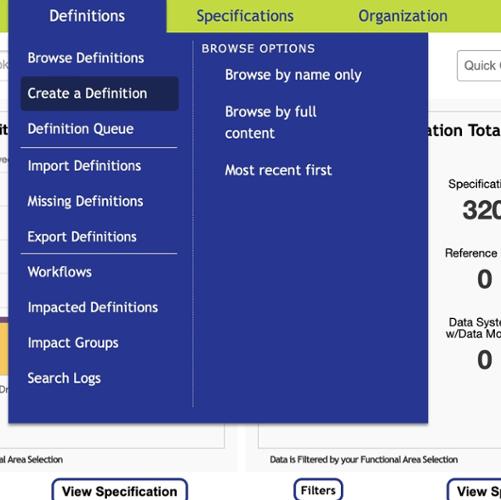
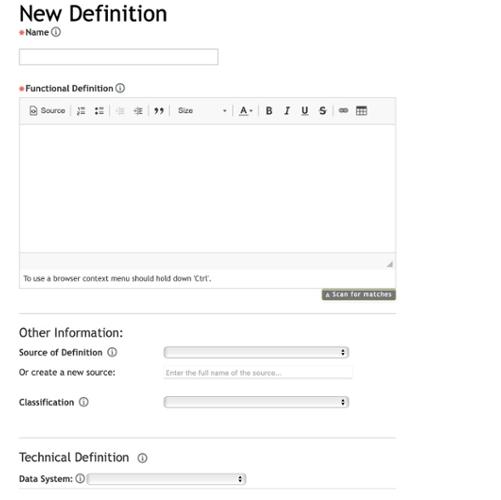
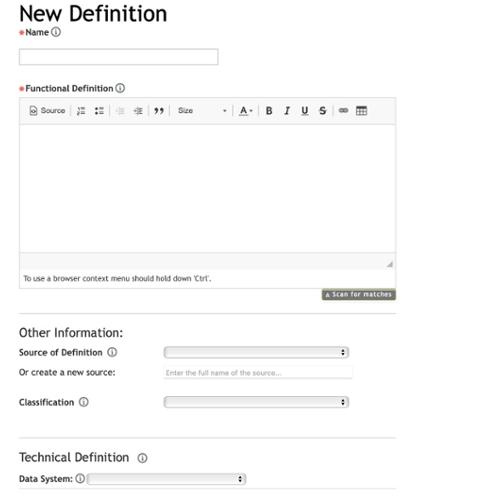
Tags
None found.
Definition name
A word or phrase representing a data element. It can be a field or group of concatenated fields in a database; a derived field; a calculation (i.e., grade point average, etc.); a management metric (i.e., retention rate, etc.).
Definition Name Best Practices
- Search before creating a definition to prevent duplication.
- Browse community definitions which can be copied and edited to fit Hamilton College.
- Clear and concise description of the elements such as:
- First Generation College Student
- Student Enrollment
- Gender for IPEDS Reporting (denotes that there is more than one definition for gender)
Last updated: July 29, 2025
Functional Definition
Define what the data element means and how it is used. It should provide uniqueness within a functional area, links to related definitions, examples of values as well as context/perspective that would enable understanding for a person who is unfamiliar with the data.
Please visit Best Practices for Function Definitions to learn more.
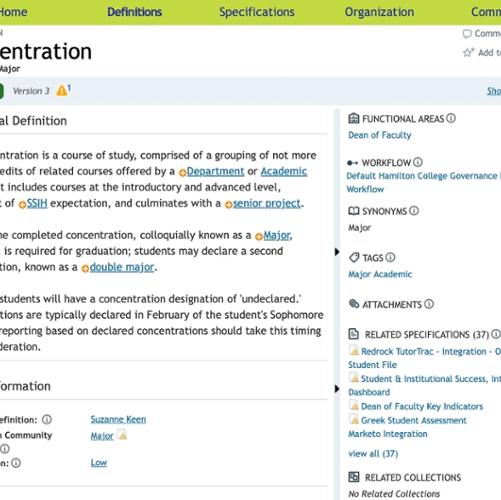
Other Information
Source of the definition, as opposed to the source of the data element. The majority will use the default of “Institutional Definition”, indicating it is a Hamilton College definition. External sources of definitions may be: NYSED, IPEDS, NECHE, MICHE, CDS, etc.
Security associated with the definition.
- Public Information: open to the public: defined as information with no existing local, national or international legal restrictions on access.
- Sensitive Information: access must be guarded due to proprietary, ethical or privacy considerations. This classification applies even though there may not be a civil statute requiring this protection.
- Restricted Information: legally protected by state or federal statutes, policies or regulations. This level also represents information that isn’t legally protected, but for which the data trustee has opted to restrict access.
Please visit data classifications for Hamilton College to learn more.
Technical Definition
Technical description of how to obtain data, such as the data system, time context, warehouse location.

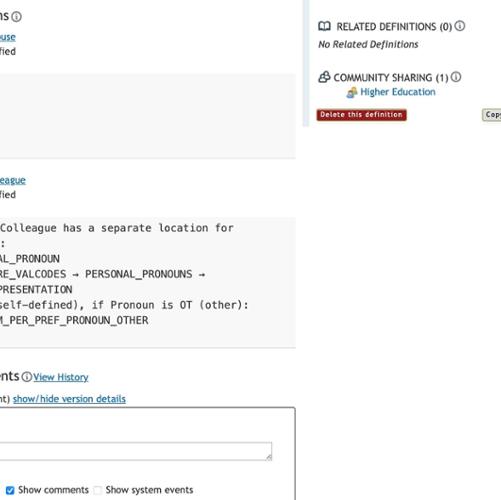
For each technical definition, you must associate each with one of Hamilton College’s data systems, such as Workday, Colleague, Slate, Marketo, Snowflake, etc.
Please visit best practices for technical definitions to learn more.
Select the data system where this definition resides as a data element.
Select from one of the time context codes to identify if the technical definition has a time sensitivity in this data system. For example, a definition may be related to a specific fiscal or financial aid year or to an academic term.

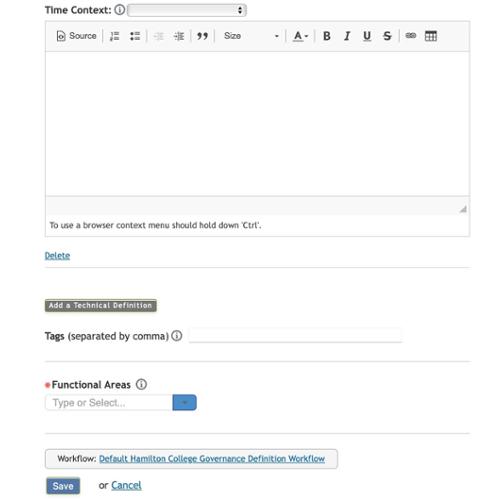
Tags
Tags are searchable words or phrases that can be created once and shared by multiple definitions, specifications, or collections. They are used as a filter on the object's Browse page.
Example tags include:
- Bio/Demo
- FERPA
- Training item
Functional Areas
Functional areas categorize objects by topic or business area and
Determine the workflow assigned to the object
Control permissions for viewing, editing, and managing the object
Provide an option for filtering on the object's Browse page
Editors can add or remove functional areas for an in-progress or approved version of an object. However, changing the functional areas may change the workflow and, for items currently in progress, may result in the approval process starting over.
Please visit Functional Areas to learn more.
Click SAVE

At the top of the page click EDIT at the top of page to access the other attributes or edit those from the form.
Right Sidebar
Workflows control the approval process for an object.
To see a summary of the stages and steps for the definition approval workflow assigned to the definition you are viewing, click Show Workflow in the workflow header.
To view details about all the stages and steps of the assigned definition approval workflow, click on the workflow's name.
Synonyms are searchable words or phrases that are approved alternate names for a definition. For example, "Freshman" is a synonym for "First Year Student". Words used as synonyms should not be definitions; when a definition is similar to another definition, they are related. See the "Related Definitions" in the sidebar.
Definition editors can add or remove synonyms to an approved or an in-progress definition.
Attachments are files added to an object to provide information not covered in the standard Cookbook fields. These files are added to a specific version of the object.
Editors can add attachments, such as a text file, a PDF, even a graphic or picture, that might help explain that object. All users who can view the object can view its attachments.
Related definitions are definitions that have a similar usage or are terms that appear in this definition's functional definition.
Definition editors can add or remove related definitions to an approved or an in-progress definition.
If your organization shares definitions with one or more Cookbook communities, those communities are listed here. If this definition is shared with one or more of these communities, a check displays next to the community name. When a definition is shared, all information, except technical information, is shared.
Definition editors can share an in-progress or approved definition with one of these communities.
Related specifications are those specifications that use this definition.
The relationship between definitions and specifications is created when a definition is added to a specification.
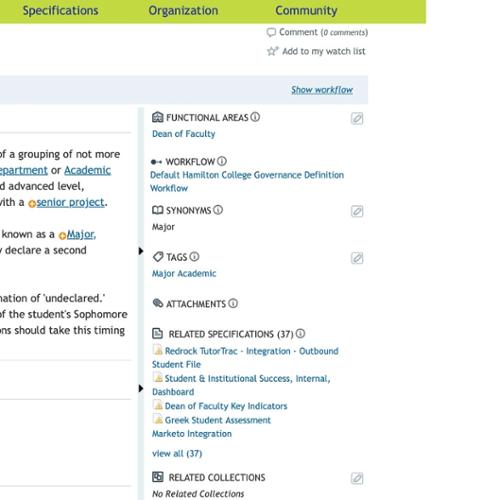
Contact
Team Name
Business Intelligence and Web Services
198 College Hill Road
Clinton, NY 13323
